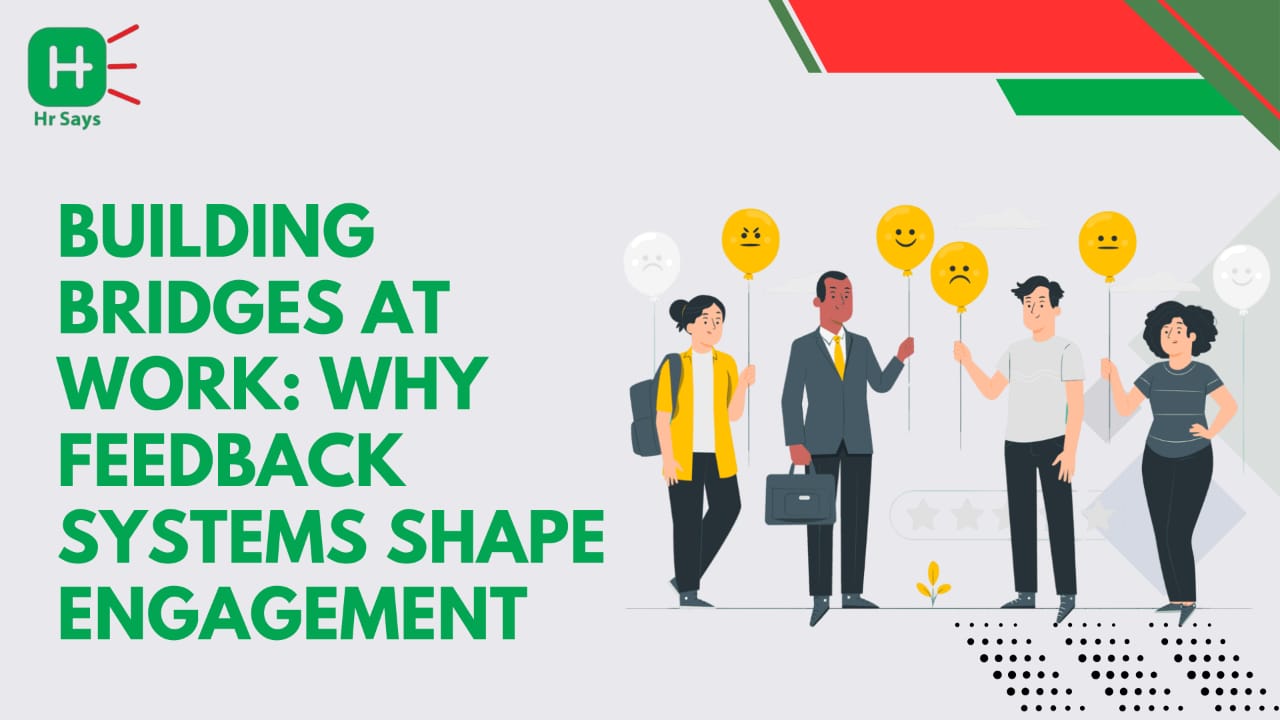Is it possible that feedback will be able to change how employees relate to work? Its solution would be the way it is designed and practiced by organizations. There is more to a feedback system than transmitting opinions. It is a formal means of developing trust, developing growth and increasing employee engagement.
The Role of Feedback in Engagement
Feedback has never left the communication process at the workplace. When it is properly executed, this makes employees feel noticed and appreciated. Getting involved will increase when people have the perception that their input will be noticed and their numbers count.
● It keeps employees aligned with organizational goals.
● It prevents misunderstandings and unresolved conflicts.
● It encourages a culture of openness.
A well-placed word of appreciation or a constructive suggestion can influence how long an employee stays and how deeply they contribute.
Why Feedback Systems Matter Today
The workplace has shifted. Hybrid models, evolving roles, and digital transformation have created new gaps in communication. Feedback systems provide a steady bridge. Without them, engagement risks becoming shallow and inconsistent.
Alignment with Engagement Strategies
Employee engagement strategies for Indian companies increasingly highlight the importance of structured feedback. Leaders now see feedback not as a formality but as an essential driver of motivation.
Connecting to Career Growth
For HR teams, feedback also feeds into career growth for HR professionals themselves. By designing effective systems, HR earns credibility and fosters long-term retention.
Features of an Effective Feedback System
Not all systems work equally well. What makes a feedback loop effective is its design and consistency.
Clarity in Process
Employees should know when and how feedback will be given. A random, unclear method only creates anxiety.
Two-Way Communication
Feedback should never flow in one direction. Listening to employees with equal seriousness ensures engagement is not performative.
Integration with Technology
HR tech trends in India 2025 emphasize tools that allow feedback to be tracked, measured, and acted upon. Digital solutions help feedback stay transparent and useful instead of disappearing in files or inboxes.
Challenges in Building Feedback Systems
Even the best systems face resistance. Feedback is often misunderstood as criticism. Fear of judgment prevents honest exchanges. For HR leaders, the challenge lies in balancing openness with sensitivity.
● Employees may fear retaliation.
● Managers may lack training to deliver constructive feedback.
● Inconsistent follow-ups weaken trust.
Here, leadership skills for HR managers play a central role. Trained leaders can turn feedback into a driver of culture rather than a source of discomfort.
The Future of Feedback and Engagement
The future of HR in India is shifting towards transparency and data-driven decisions. Employee engagement strategies will depend less on annual reviews and more on continuous conversations.
HR analytics and data-driven decision making will allow organizations to identify patterns, track morale, and make timely interventions. The role of AI in HR management will further simplify analysis while keeping the human element intact.
Conclusion
Feedback is no longer optional. It is a system that creates belonging, accountability, and progress. Engagement without feedback feels incomplete, while feedback without engagement feels mechanical. Together, they form the backbone of thriving workplaces.

 Feedback systems shape how employees engage, stay motivated, and grow within organizations. With clarity, consistency, and technology, HR leaders can design feedback loops that build trust, reduce gaps, and prepare workplaces for the future.
Feedback systems shape how employees engage, stay motivated, and grow within organizations. With clarity, consistency, and technology, HR leaders can design feedback loops that build trust, reduce gaps, and prepare workplaces for the future.












.jpeg)
.jpeg)

.jpeg)

.jpeg)


.jpeg)

.jpeg)

.jpeg)


